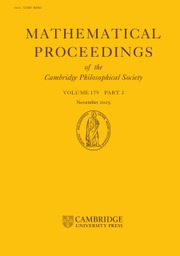Crossref Citations
This article has been cited by the following publications. This list is generated based on data provided by Crossref.
Shaukat, Awais
and
Blanchet, Christian
2023.
Weakly framed surface configurations, Heisenberg homology, and mapping class group action.
Archiv der Mathematik,
Vol. 120,
Issue. 1,
p.
99.


